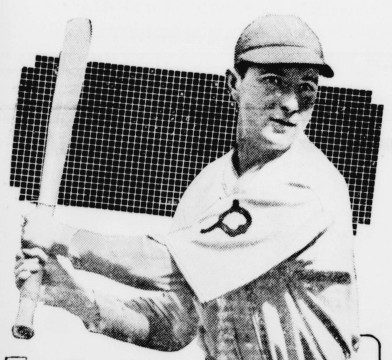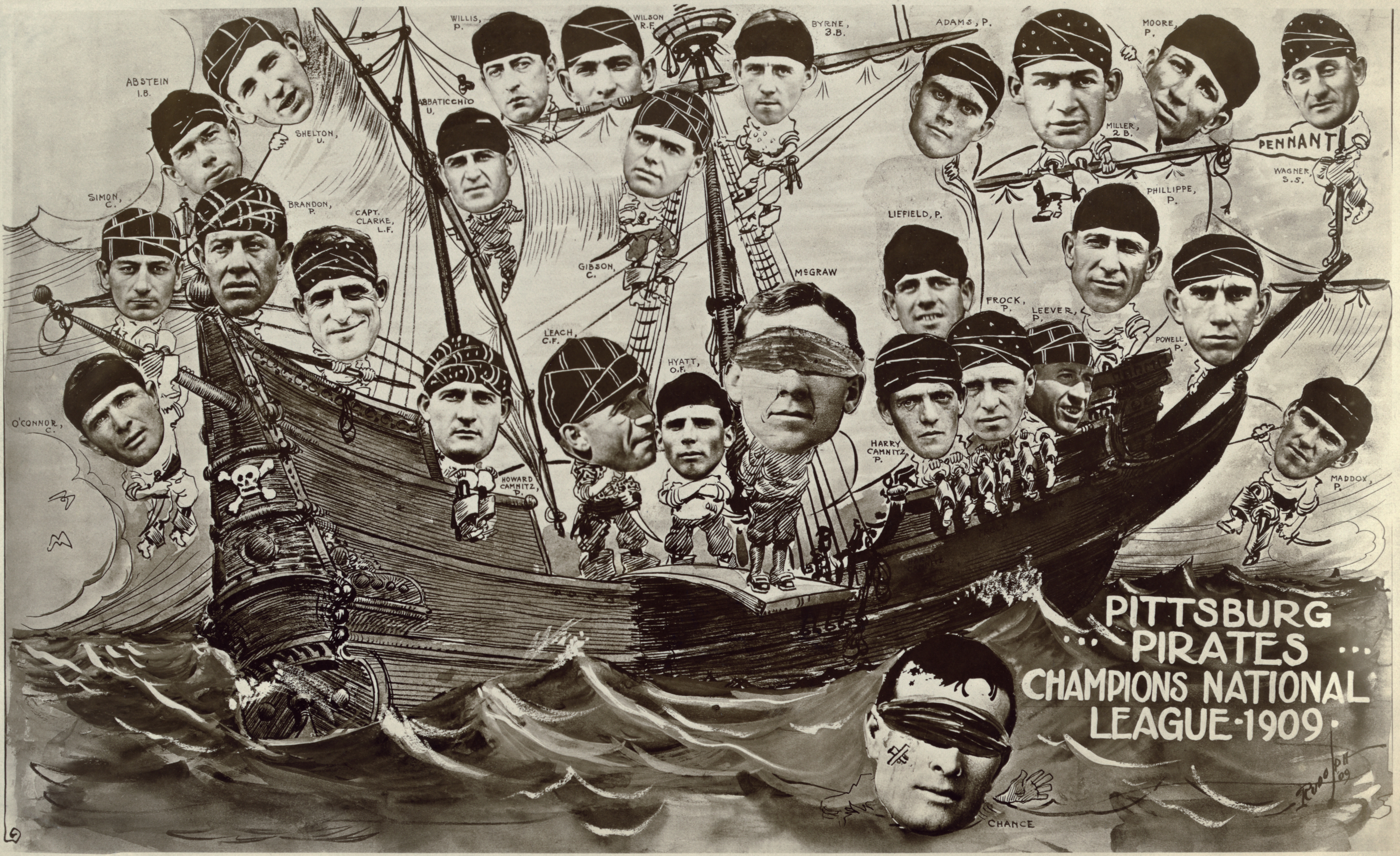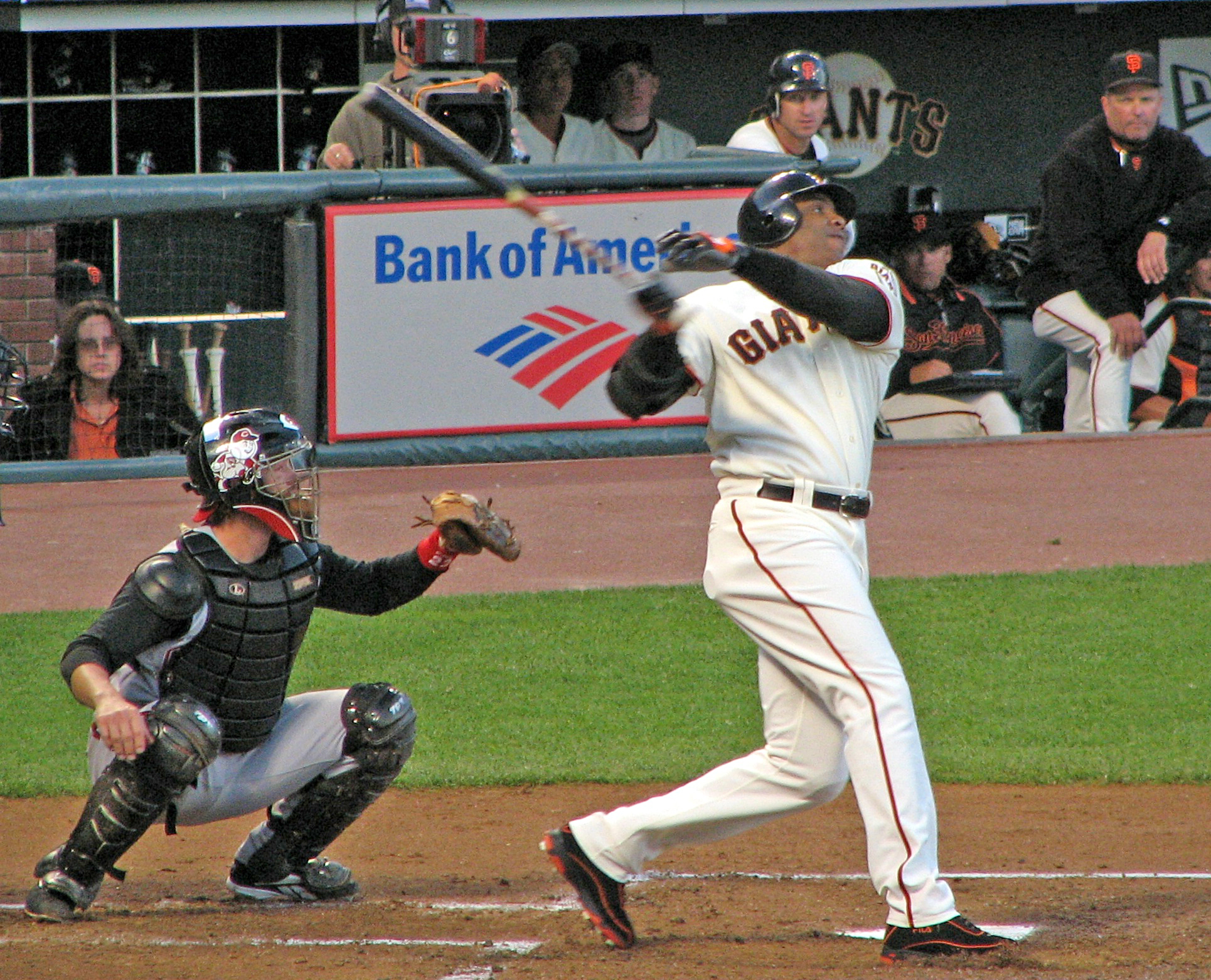|
Jimmy Cooney (1920s Shortstop)
James Edward Cooney (August 24, 1894 – August 7, 1991), nicknamed "Scoops", was an American shortstop in Major League Baseball who played for six different teams between and . Listed at , 160 lb., Cooney batted and threw right-handed. His father Jimmy Sr. and younger brother Johnny also played in the Major Leagues. A native of Cranston, Rhode Island, Cooney reached the Majors in 1917 with the Boston Red Sox, spending part of the season with them before playing with the New York Giants in . After that, he spent four years with the Milwaukee Brewers of the American Association, setting a personal mark with 12 consecutive hits in . Cooney came back to play once again in the Major Leagues with the St. Louis Cardinals (–), Chicago Cubs (–), Philadelphia Phillies () and Boston Braves (). His most productive season came in 1924 with St. Louis, when he hit a career-high .295 in 110 games including 20 doubles, eight triples, 57 runs batted in and 12 stolen bases, also ca ... [...More Info...] [...Related Items...] OR: [Wikipedia] [Google] [Baidu] |
Shortstop
Shortstop, abbreviated SS, is the baseball positions, baseball or softball fielding position between second base, second and third base, which is considered to be among the Defensive spectrum, most demanding defensive positions. Historically, the position was assigned to defensive specialists who were typically poor at batting and were often placed at the bottom of the Batting order (baseball), batting order. Today, shortstops are often able to hit well and many are placed at the top of the lineup. In the Baseball positions, numbering system used by Baseball scorekeeping, scorers to record defensive plays, the shortstop is assigned the number 6. More hit balls go to the shortstop than to any other position, as there are more Right-handedness, right-handed hitters in baseball than Left-handedness, left-handed hitters, and most hitters have a tendency to Pull hitter, pull the ball slightly. Like a second baseman, a shortstop must be agile, for example when performing a Glossary of b ... [...More Info...] [...Related Items...] OR: [Wikipedia] [Google] [Baidu] |
Hit (baseball)
In baseball statistics, a hit (denoted by H), also called a base hit, is credited to a batting (baseball), batter when the batter safely reaches or passes first base after hitting the ball into fair ball, fair territory with neither the benefit of an error (baseball), error nor a fielder's choice. Scoring a hit To achieve a hit, the batter must reach first base before any fielder can either tag out, tag him with the ball, throw to another player protecting the base before the batter reaches it, or force play, tag first base while carrying the ball. The hit is scored the moment the batter reaches first base safely; if he is put out while attempting to stretch his hit to a double (baseball), double or triple (baseball), triple or home run on the same play, he still gets credit for a hit (according to the last base he reached safely on the play). If a batter reaches first base because of offensive interference by a preceding runner (including if a preceding runner is hit by a batt ... [...More Info...] [...Related Items...] OR: [Wikipedia] [Google] [Baidu] |
Johnny Neun
John Henry Neun (October 28, 1900 – March 28, 1990) was an American professional baseball player and manager (baseball), manager. He played in Major League Baseball (MLB) as a first baseman from 1925 to 1931 for the Detroit Tigers and the Boston Braves (baseball), Boston Braves. Neun is notable for completing the seventh unassisted triple play in MLB history. After his playing career he served as the manager for the New York Yankees and the Cincinnati Reds. Career Neun was born in Baltimore, Maryland. Although never an everyday player (he never played more than 97 games a season), Neun entered baseball immortality on May 31, 1927 against the Cleveland Indians, when he caught a line drive from Homer Summa, stepped on first to retire Charlie Jamieson, and despite shouts from his shortstop to throw him the ball, raced towards second base to retire Glenn Myatt, completing the seventh unassisted triple play in MLB history, and the first such play to end a game. Neun became the seco ... [...More Info...] [...Related Items...] OR: [Wikipedia] [Google] [Baidu] |
First Base
A first baseman, abbreviated 1B, is the player on a baseball or softball team who fields the area nearest first base, the first of four bases a baserunner must touch in succession to score a run. The first baseman is responsible for the majority of plays made at that base. In the numbering system used to record defensive plays, the first baseman is assigned the number 3. Also called first sacker or cornerman, the first baseman is ideally a tall player who throws left-handed and possesses good flexibility and quick reflexes. Flexibility is needed because the first baseman receives throws from the other infielders, the catcher and the pitcher after they have fielded ground balls. In order for the runner to be called out, the first baseman must be able to ''stretch'' towards the throw and catch it before the runner reaches first base. First base is often referred to as "the other hot corner"—the "hot corner" being third base—and therefore, like the third baseman, he must have ... [...More Info...] [...Related Items...] OR: [Wikipedia] [Google] [Baidu] |
Clyde Barnhart
Clyde Lee Barnhart (December 29, 1895 – January 21, 1980) was an American right-handed outfielder and third baseman in Major League Baseball who played for the Pittsburgh Pirates. He attended Cumberland Valley State Normal School (now Shippensburg University of Pennsylvania), where he played college baseball and basketball. Barnhart was inducted into the Shippensburg University Hall of Fame in 1986. He is the father of Vic Barnhart who played three years in major league baseball, also for the Pittsburgh Pirates. Career Barnhart made his major league debut on September 22, 1920, with the Pirates at age 24. That year, Barnhart had a batting average of .326 in 46 at bats in 12 games. In 1921, Barnhart was promoted to a starter. That year he hit .258 in 449 at bats in 124 games. The Pirates, however, were not satisfied with his statistics, so they demoted him to the bench. In 1922, Barnhart hit .330 in 209 at bats in 75 games, giving him the third highest batting average on the t ... [...More Info...] [...Related Items...] OR: [Wikipedia] [Google] [Baidu] |
Lloyd Waner
Lloyd James Waner (March 16, 1906 – July 22, 1982), nicknamed "Little Poison", was a Major League Baseball (MLB) center fielder. His small stature at and 132 lb (60 kg)"Lloyd Waner" . ''psu.edu''. Retrieved 2010-10-10. made him one of the smallest players of his era. Along with his brother, , he anchored the outfield throughout the 1920s and 1930s. After brief stints with four other teams late in his career, Waner retired as a Pirate. Waner finished with a |
Second Base
In baseball and softball, second baseman, abbreviated 2B, is a fielding position in the infield, between second and first base. The second baseman often possesses quick hands and feet, needs the ability to get rid of the ball quickly, and must be able to make the pivot on a double play. In addition, second basemen are usually right-handed; only four left-handed throwing players have ever played second base in Major League Baseball since 1950. In the numbering system used to record defensive plays, the second baseman is assigned the number 4. Good second basemen need to have very good range since they have to field balls closer to the first baseman who is often holding runners on, or moving towards the base to cover. On a batted ball to right field, the second baseman goes out towards the ball for the relay. Due to these requirements, second base is sometimes a primarily defensive position in the modern game, but there are hitting stars as well. Second base is often referred ... [...More Info...] [...Related Items...] OR: [Wikipedia] [Google] [Baidu] |
Paul Waner
Paul Glee Waner (April 16, 1903 – August 29, 1965), nicknamed "Big Poison", was an American professional baseball right fielder who played in Major League Baseball (MLB) for four teams between 1926 and 1945, most notably playing his first 15 seasons with the Pittsburgh Pirates. The greatest Pirate outfielder up to his retirement, he won the 1927 NL Most Valuable Player Award in his second season, collecting a team-record 237 hits that year. Waner set the team record for doubles in a season three times, including 1932 when he set the NL record for doubles in a season with 62. Cressman, Mark, pp. 71 In the only postseason appearance of his career, he hit .333 in the Pirates' 1927 World Series loss against the New York Yankees. Waner won three National League (NL) batting titles, led the NL in hits twice, and collected over 200 hits eight times including four consecutive seasons from 1927 to 1930. On June 19, 1942, Waner became the seventh member of the 3,000 hit club, with a s ... [...More Info...] [...Related Items...] OR: [Wikipedia] [Google] [Baidu] |
Pittsburgh Pirates
The Pittsburgh Pirates are an American professional baseball team based in Pittsburgh. The Pirates compete in Major League Baseball (MLB) as a member club of the National League (baseball), National League (NL) National League Central, Central Division. Founded as part of the American Association (19th century), American Association in 1881 under the name the Allegheny Base Ball Club of Pittsburgh, the club joined the National League in 1887 and was a member of the National League East from 1969 through 1993. The Pirates have won five World Series championships, nine List of National League pennant winners, National League pennants, nine National League East division titles and made three appearances in the Major League Baseball Wild Card Game, Wild Card Game. The Pirates were among the best teams in baseball at the start of the 20th century, playing in the 1903 World Series, inaugural World Series in 1903 and winning their first title in behind Honus Wagner. The Pirates took ... [...More Info...] [...Related Items...] OR: [Wikipedia] [Google] [Baidu] |
Unassisted Triple Play
In baseball, an unassisted triple play occurs when a defensive player makes triple play, all three outs by himself in one continuous play, without his teammates making any Assist (baseball), assists. Neal Ball was the first to achieve this in Major League Baseball (MLB) under modern rules, doing so on July 19, 1909. For this rare play to be possible there must be no outs in the inning and at least two runners on base, normally with the runners going on the pitch (e.g., double steal or Hit and run (baseball), hit-and-run). An unassisted triple play usually consists of a hard line drive hit directly at an infielder for the first out, with that same fielder then able to double off one of the base runners and tag a second for the second and third outs. In MLB, a total of fifteen players have fielded an unassisted triple play, making this feat rarer than a Perfect game (baseball), perfect game. Of these fifteen players, eight were shortstops, five were second basemen and two were first ... [...More Info...] [...Related Items...] OR: [Wikipedia] [Google] [Baidu] |
Home Run
In baseball, a home run (abbreviated HR) is scored when the Baseball (ball), ball is hit in such a way that the batting (baseball), batter is able to circle the bases and reach home plate safe (baseball), safely in one play without any error (baseball), errors being committed by the Defense (sports), defensive team. A home run is usually achieved by hitting the ball over the outfield fence between the foul poles (or hitting either foul pole) without the ball touching the Baseball field, field. Inside-the-park home runs where the batter reaches home safely while the baseball is in play on the field are infrequent. In very rare cases, a fielder attempting to catch a ball in flight may misplay it and knock it over the outfield fence, resulting in a home run. An official scorer will credit the batter with a hit (baseball), hit, a Run (baseball), run scored, and a run batted in (RBI), as well as an RBI for each Base running, runner on base. The pitcher is recorded as having given u ... [...More Info...] [...Related Items...] OR: [Wikipedia] [Google] [Baidu] |
Stolen Base
In baseball, a stolen base occurs when a runner advances to a base unaided by other actions and the official scorer rules that the advance should be credited to the action of the runner. The umpires determine whether the runner is safe or out at the next base, but the official scorer rules on the question of credit or blame for the advance under Rule 10 (Rules of Scoring) of the MLB's Official Rules. A stolen base most often occurs when a base runner advances to the next base while the pitcher is pitching the ball to home plate. Successful base stealers must be fast and have good timing. Background Ned Cuthbert, playing for the Philadelphia Keystones in either 1863 or 1865, was the first player to steal a base in a baseball game, although the term ''stolen base'' was not used until 1870. For a time in the 19th century, stolen bases were credited when a baserunner reached an extra base on a base hit from another player. For example, if a runner on first base reached third ... [...More Info...] [...Related Items...] OR: [Wikipedia] [Google] [Baidu] |






